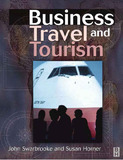| dc.description.abstract | The book has been structured in, what we hope the reader will agree, is a logical
manner.
In Part One, the authors define business travel and tourism and talk a little about its
historical development. They identify the different types of business travel and tourism,
from the individual business trip to major conventions and exhibitions to incentive travel
packages, training courses to product launches. Chapters 3 and 4 then focus on the
demand and supply side of the industry, respectively, while Chapter 5 looks at the role of
the destination in business travel and tourism. Part One ends with two chapters on the
macro-environment of business travel and tourism and its economic, social and
environmental impacts.
Part Two concentrates on the development and management of business travel and
tourism in terms of its physical and the human infrastructure, as well as the marketing of
the business travel and tourism product.
The book then changes to the practical side of business travel and tourism, in Part
Three. Chapter 11 looks at the key issues involved in the organization of business tourism
events, with Chapter 12 offering examples of good practice. The final chapter in Part
Three offers seven detailed interactive exercises to provide an opportunity for the reader
to think about what is involved in organizing business tourism events, designing business
tourism facilities or marketing business travel and tourism destinations. The aim
throughout Part Three is to encourage good practice and professionalism.
Part Four looks at a range of challenges that the authors believe will face business travel
and tourism in the future.
The penultimate part, Part Five, features a variety of detailed case studies, designed to
illustrate points and issues covered in the text.
Part Six consists of a glossary of terms –a valuable explanation of some of the jargon
used in this specialist field of tourism.
A full bibliography, provides a wide variety of relevant references for the reader who
wishes to look deeper into issues raised in this book.
Preface xv
Throughout the book, copious use is made of examples drawn from around the world.
Furthermore, each chapter concludes with discussion points and exercises to help readers
deepen their understanding of the subject.
This book is aimed at both students and practitioners. The authors hope it is written
in a style which will make it accessible and attractive to both audiences. It should be
particularly useful for students on undergraduate and diploma courses in tourism.
However, it will, hopefully, also be of interest to professional conference organizers,
incentive travel executives, destination marketers, and those involved in the planning of
new conference and exhibition venues.
The book’ s appeal should be to those interested in business tourism wherever in the
world they are based, from Brighton to Bangkok, Brisbane to Barcelona, Bogota to
Bethlehem, Boston to Beirut, or Barbados to Bali.
We hope you enjoy reading this book and that you find it useful in some way. If it helps
raise the profile of this largely undervalued and under-recognized sector of tourism, then
writing it will have been time well spent. | en_US |

